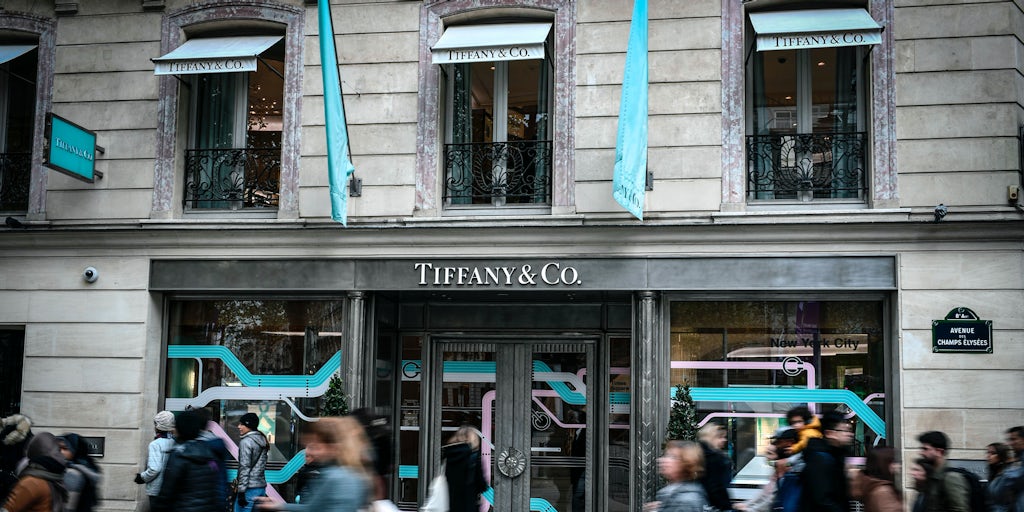How the LVMH & Tiffany Deal Will Reshape Luxury | News & Analysis
PARIS, France — After weeks of public acrimony, LVMH and Tiffany’s mega-deal is back on track at a reduced price — and set to reshape the luxury industry.
The multi-billion dollar merger between the French luxury conglomerate and American jeweller was always a game changer, positioning LVMH as a major force in the hard luxury market currently dominated by rival group Richemont. But the pandemic threw the partnership into jeopardy, upending the projections on which the deal was priced and prompting a public and aggressive legal tit-for-tat that foreshadowed behind-the-scenes negotiations to revalue the agreement.
Under the new deal, LVMH has knocked roughly $400 million off its original acquisition price of about $16.2 billion. It’s a relatively modest discount that preserves LVMH’s reputation as a hard-charging negotiator, but was also clearly palatable to Tiffany’s board. It is expected to close early next year, pending shareholder approval.
In spite of the public acrimony, the logic of the merger was always compelling: the tie up between the two brands will be formidable, elevating LVMH’s already solid lead in the luxury sector and helping the conglomerate further diversify. LVMH already owns champagne, cognac, perfumes, hotels, duty free stores and retailer Sephora, but Louis Vuitton and Dior remain the biggest drivers of growth — and the handbag business is more competitive than ever. With both Tiffany and Bulgari in its stable, it will be in a stronger position to compete with Richemont, which owns Cartier and Van Cleef & Arpels.
That’s also because of Tiffany’s supply chain, which is essentially vertically integrated. As the luxury industry has consolidated over the past 20 years, the major players — including LVMH, Chanel and Hermès, and to an extent Kering — have bought up supplier after supplier, ensuring they have complete control over their product, from material to shop floor. Tiffany’s manufacturing capabilities will also benefit Bulgari and the group’s other hard luxury players, as well as any other jewellers it acquires in the future.
While viewed in some circles as less prestigious than Cartier, Tiffany’s global name recognition is nonetheless extremely important in an industry that remains largely unbranded. In the past, Richemont was able to dominate the market simply by maintaining the Cartier and Van Cleef & Arpels brand value: it was a business built on steady, if sometimes slow, growth and hefty profits. However, as the upscale watch market is squeezed — particularly at the lower end, where $1,000 timepieces have been replaced by Apple Watches or simply by smartphones — and its other, less cared for groups (namely, fashion and online retail) lag behind competitors, Richemont cannot rely upon Cartier and Van Cleef alone to carry it.
Especially as Tiffany is about to get a significant boost with the support of the largest luxury group in the world. The jeweller has lagged in modernising its retail stores and marketing campaigns, but joining LVMH brings it into the fold of an industry titan whose size gives it significant leverage with multi-brand retailers, real estate developers, magazines, influencers and other key players in the fashion ecosystem. It will also provide investment firepower to turbocharge the transformation. If anyone can make Tiffany globally relevant — especially in China, where it’s growing rapidly — it’s LVMH.
The new agreement also spares both companies a prolonged legal battle that looked likely as the deal went south this fall. LVMH said in September it was backing out of the deal, in a move many saw as a bid to secure a lower price. Tiffany responded by suing the company in a Delaware court. LVMH counter-sued, alleging the jeweller mismanaged its business during the pandemic, giving it grounds to get out of the deal.
Things got uglier. Tiffany accused LVMH of a “blatant attempt to evade its contractual obligation” while LVMH called Tiffany “a mismanaged business that over the first half of 2020 hemorrhaged cash…with no end to its problems in sight.”
But despite the wider luxury malaise, both companies have enjoyed unexpectedly swift recoveries, which may have helped ease pricing jitters. LVMH’s fashion sales returned to double-digit growth, buoyed by high sales in China, though its hard luxury division lagged. Tiffany said earlier this month that its sales have been rising through October and fourth-quarter earnings are expected to see a solid increase from a year earlier.
“The Tiffany brand is an ideal fit for LVMH,” Gam Luxury Brands Fund Investment Manager Swetha Ramachandran said in a note. “The company has emerged from Covid-19 a relative winner in an environment where trusted brands are winning with consumers.”
In the end, it was unlikely that LVMH Chairman and Chief Executive Bernard Arnault would have let Tiffany go. He has been eying the company for decades, and would have likely only gone to court to save the deal, not to stop it. This outcome allowed LVMH to save a little face, and for Tiffany shareholders to profit from what is still set to go down in history as one of luxury’s blockbuster moments.
Additional reporting by Lauren Sherman.
Disclosure: LVMH is part of a group of investors who, together, hold a minority interest in The Business of Fashion. All investors have signed shareholders’ documentation guaranteeing BoF’s complete editorial independence.


